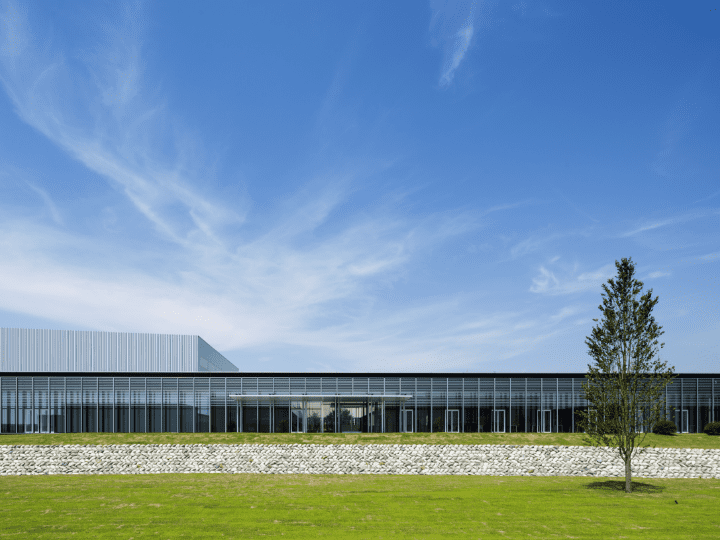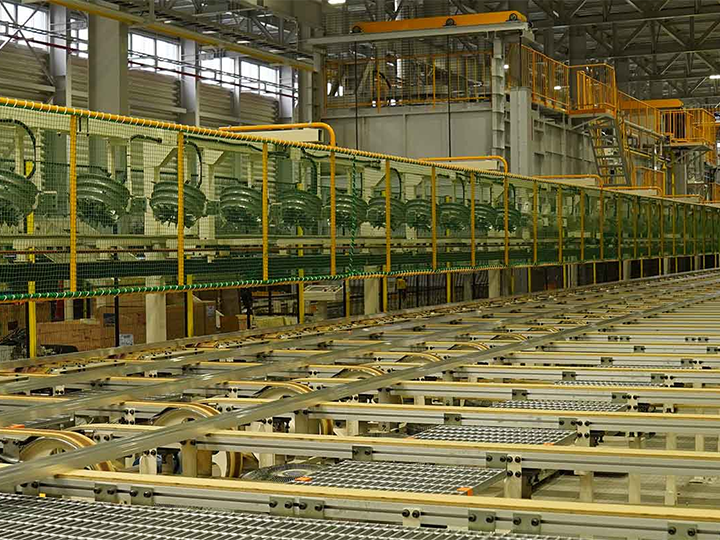- HOME
- Newsroom
- News Releases
- YKK AP and Kandenko Announce Business Alliance in Development of Building Integrated Photovoltaics (BIPV) as a Renewable Energy Business
YKK AP and Kandenko Announce Business Alliance in Development of Building Integrated Photovoltaics (BIPV) as a Renewable Energy Business
YKK AP Inc. (Head Office: Chiyoda-ku, Tokyo; President: Akira Uozu) and Kandenko Co., Ltd. (Head Office: Minato-ku, Tokyo; President: Toshio Nakama) are pleased to announce that on May 24, the two companies agreed a business alliance to develop and promote "Building Integrated Photovoltaics" (BIPV).
This business alliance between YKK AP, a window manufacturer, and Kandenko, a leading electrical equipment installation company, will develop BIPV, which makes use of the windows and walls of commercial buildings, as a renewable energy business initiative aimed at carbon neutrality. Going forward, demonstration testing will be conducted using perovskite solar cells and other technologies.
Announcement of the business alliance by
Toshio Nakama, President of Kandenko (left) and Akira Uozu, President of YKK AP (right)
The expansion of renewable energy is a priority task for achieving carbon neutrality by 2050. Meanwhile, Japan’s Sixth Strategic Energy Plan sets a target of 36–38% renewable energy in the power source mix by 2030. The largest proportion of this will be accounted for by photovoltaic power generation. However, in Japan, with its relatively small amount of flat land, there are limits to how many ground-level solar power plants, as typified by mega-solar systems, can be installed, and the lack of rooftop space on urban buildings is also a challenge for increasing installed solar power capacity. In order to address this issue, this business alliance will promote Building Integrated Photovoltaics (BIPV), which makes use of the windows and walls of buildings, which can be counted on to provide large surface areas.
The two companies will develop two types of Building Integrated Photovoltaics (BIPV): an "inner window type" (for existing and new buildings) that is easy to install and maintain, and a curtain wall (*1) "spandrel-embedded(*2) type" (for new buildings). In particular, the use of the "inner window type" allows for the combined effects of thermal and acoustic insulation, the features that internal windows are known for. Possible issues include transparency and the impact on the amount of electricity generated, since the light will be passing through the outer glass, and these will be examined through future demonstration tests.
In terms of roles, YKK AP will be in charge of product development, while Kandenko will be in charge of installation technology and system development, including electrical equipment components.
By promoting the use of Building Integrated Photovoltaics (BIPV), the two companies will contribute to the realization of a renewable energy society and to the improvement of resilience in the event of disasters, and will pursue initiatives aimed at creating sustainable eco-system.
*1 "Curtain wall" is a non-load bearing wall that does not directly support the weight of the building. As such, it is an exterior wall made of materials such as aluminum and glass, with columns and beams forming the main structural elements.
*2 "Spandrel" refers to the wall between the upper and lower windows in a curtain wall system.
Download the full news release in PDF format.
* Please do not transcribe or convert for a different use the YKK AP website without permission.
* The news releases posted here were current at the time of their publication.





